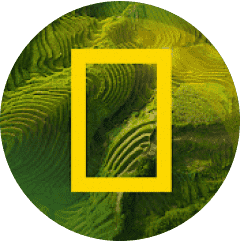12. The Inca - Cities in the Cloud (Part 1 of 2)
Fall of Civilizations・7 minutes read
Hiram Bingham discovered the ancient ruins of Machu Picchu in Peru, amidst the challenging landscape of the Andes, shaped by seismically active mountains. The Inca Empire's rise and fall saw internal strife, conquests under kings like Pachacuti, and the eventual clash with more advanced invaders, marking the end of an era in South American history.
Insights
- Hiram Bingham's expedition in 1911 led to the discovery of Machu Picchu, an ancient Inca royal estate, showcasing finely crafted stone buildings amidst Peru's cloud forests.
- The Andes Mountains, with a diverse landscape shaped by seismic activity, were home to advanced civilizations like the Inca, Moche, and Nazca, known for their sophisticated societies and innovative agricultural practices.
- The Inca Empire, characterized by a unique communal economy and hierarchical structure, expanded rapidly under rulers like Pachacuti and Huayna Capac, covering a vast territory with millions of people.
- The Inca society's religious inclusivity, military strategies, and economic systems, including shared land ownership and textile production, were key aspects of their civilization's success and eventual downfall due to internal conflicts and external threats.
Get key ideas from YouTube videos. It’s free
Recent questions
What did Hiram Bingham discover in Peru?
Ancient ruins in the Urubamba Valley.
What was the significance of the Andes Mountains?
Seismically active, shaping extreme landscapes.
How did the Inca Empire record information?
Using a system of rope knots called quipu.
What was the Inca Empire's approach to religion?
Inclusive, incorporating local gods into their pantheon.
Who was the ruler of the Inca Empire during its peak expansion?
Emperor Huayna Capac.
Related videos
Summary
00:00
Discovery of Machu Picchu in Andes.
- In 1911, explorer Hiram Bingham ventured into Peru's cloud forests, following rumors of a lost city in the Urubamba Valley.
- Despite skepticism, Bingham climbed a treacherous mountain trail and discovered ancient ruins amidst a tropical forest.
- The ruins revealed finely crafted stone buildings, leading Bingham to believe he had found a significant Inca ruin.
- Further exploration uncovered a royal estate of the Inca kings, abandoned for centuries, now known as Machu Picchu.
- The Andes Mountains, spanning over 7,000 kilometers, are seismically active and shape extreme landscapes with lush rainforests and arid deserts.
- The Atacama Desert, the driest place on Earth, is home to oases fed by rivers from the Andes, where early civilizations thrived.
- The Inca Empire believed in a creator god named Viracocha and were part of a lineage of civilizations in the Andes region.
- Predecessors like the Moche and Nazca civilizations developed sophisticated societies, with the Nazca famous for their desert lines depicting animals and geometric shapes.
- Life in the Andes was challenging due to the rugged landscape, with distinct zones for agriculture and reliance on communal labor for survival.
- The reciprocal economy and communal efforts were crucial for the Andean people to thrive in the harsh environment, shaping their society and civilization.
20:36
Andean civilizations: trade, culture, and empire
- Early valley settlements in the Andes were connected by precarious pathways and roads, with narrow river gorges that could only be crossed at specific points.
- Caravans of llamas were used for transportation along these roads, capable of carrying loads up to 40 kilograms across challenging terrain.
- A sophisticated trade route existed in the Andes, with goods like cocoa leaves, tobacco, and feathers moving westward, while maize, seashells, and dried fish traveled eastward.
- Tiwanaku, a significant city in western Bolivia near Lake Titicaca, was one of the first great cities in the region, featuring vast pyramid structures and impressive carved gateways.
- The Inca creation story linked Tiwanaku to the origin of light and civilization, with the belief that the creator god Viracocha worked there to create the world.
- The Wari civilization excelled in water control, constructing vast reservoirs and aqueducts that transformed the landscape of the low Andes.
- The Wari built terraces for agriculture, displaying advanced engineering knowledge to grow various crops at high altitudes, including tomatoes, squashes, and tobacco.
- The Wari's administrative empire influenced the Inca, who adopted similar administrative structures and cultural practices, leading to the rise of the Inca Empire.
- The Inca used a unique system of rope knots called quipu to record information, including epic poetry and administrative data, as they did not have a written language.
- Sources for understanding Inca society include Spanish chronicles, memoirs, and accounts from native authors, as well as records from the Catholic church, which documented Inca culture and beliefs.
40:12
Inca Conquest: Eyewitness Bias and Reliable Sources
- Eyewitness accounts of the Inca conquest are vivid but colored by authors' biases and roles in Inca society's destruction.
- Secondary sources by non-witnesses are considered unreliable, except for Juan de Betanzos and Pedro Cieza de Leon.
- Betanzos, fluent in Quechua, wrote "The Narrative of the Incas" based on his Inca princess wife's accounts.
- Cieza de Leon's "Chronicles of the Inca" documents Inca history, acknowledging some unreliability.
- Titu Cusi dictated "An Inca Account of the Conquest of Peru" to Fray Marcos Garcia, capturing initial contact confusion.
- Huarochiri manuscript, supervised by Francisco de Avila, records Andean beliefs pre-European contact.
- Inca history began with settlers in Cusco around 1200, influenced by Wari and Tiwanaku cultures.
- Inca creation myths describe Cusco's humble beginnings with straw houses and ichu grass thatching.
- Pachacuti Inca Yupanqui, credited with Inca expansion, transformed Cusco into an empire capital.
- Pachacuti's conquests included vast irrigation projects, terraces, and a 5,000-kilometer road system.
58:31
Inca Warriors and Empire Expansion
- Inca warriors used arrows, javelins, slings, clubs, and maces made from chonta palm wood with copper or bronze heads, wearing armor of wood and animal skin lined with metals.
- Warriors carried small, round shields made of woven palm wood slats and cotton, favoring ambush tactics in steep valleys, using rocks to create avalanches.
- The army marched to drums and trumpets made of wood, conch shells, or horn, with a well-organized logistical network supporting them.
- Inca soldiers traveled along maintained highways, staying in tambos and being fed from storehouses called qullqas.
- After taking control of a town, the Inca built fortified storehouses filled with food, clothing, and other supplies for distribution to the population.
- The Inca practiced an inclusive attitude to religion, incorporating local gods into their pantheon upon conquering new territories.
- The Inca absorbed the gods of conquered territories into their religion, allowing local religions to continue alongside Inca beliefs.
- The Inca expanded rapidly under the reign of King Pachacuti, reorganizing the kingdom of Cusco into Tahuantinsuyu, an imperial state with four provincial governments.
- Pachacuti's reign saw the construction of Machu Picchu, a town with uncertain purpose, possibly a royal retreat or trading post for commodities like cocoa leaves.
- The Inca empire expanded further under Topa Inca, conquering the Chimu people and celebrating their ascendancy with the construction of Sacsayhuaman, a massive megalithic structure in Cusco.
01:16:05
Inca Empire: Golden Temple and Vast Expansion
- The temple described by surviving Inca princes and eyewitnesses had a circumference of 400 paces, with high walls of fine masonry and precision.
- The walls were unmatched in Spain, with black stones excellently cut and adorned with a band of gold 17 inches wide and 2 inches deep.
- The grandest house in the temple housed a large golden figure of the sun and mummies of Inca rulers surrounded by treasure.
- The Inca Empire, from its seat in Cusco, expanded to cover a vast territory with up to 12 million people, spanning from southern Colombia to central Chile.
- The Inca Empire stretched 4,000 kilometers from north to south, a unique feat in history.
- The Inca avoided the Amazon Rainforest, trading for feathers but failing in attempts to expand into the jungle.
- The Inca economy operated on shared ownership, with couples receiving land and llamas from the state in exchange for labor and food contributions.
- Textile production was crucial in Inca society, with women provided materials to produce thread, cloth, and rope.
- The Inca society was strictly hierarchical, with peasants under close scrutiny to ensure they did not own valuables.
- The Inca Empire, at its peak under Emperor Huayna Capac, expanded into present-day Chile, Argentina, and waged difficult wars in the northern jungles.
01:34:20
Inca Emperor's Prophecy: Doom and Division
- Huayna Capac, the Inca emperor, led armies through Colombia and heard rumors of a mysterious power to the north, possibly linked to strangers causing destruction.
- Huayna Capac fell ill with a mysterious disease in 1527 and died in the jungle far from home, leaving a prophecy of doom about unknown men subduing the empire.
- After Huayna Capac's death, his mummified body was carried 2,000 kilometers to Cusco, where the city was devastated by a plague, leading to a civil war and multiple claimants to the throne.
- Atahualpa, one of Huayna Capac's sons, declared himself ruler of the northern region of Quito, leading to a division in the Inca Empire and a five-year stalemate with his brother Huascar.
- Atahualpa, described as a fierce commander, captured Tumebamba and displayed brutal tactics, leading to a campaign of destruction in the south.
- Atahualpa defeated Huascar in battle, took him prisoner, and purged potential rivals to the throne, solidifying his claim as the 13th Sapa Inca.
- Atahualpa planned to move the Inca capital from Cusco to Quito, unaware that a more technologically advanced power was already on their continent, aiming to conquer the Inca Empire.




